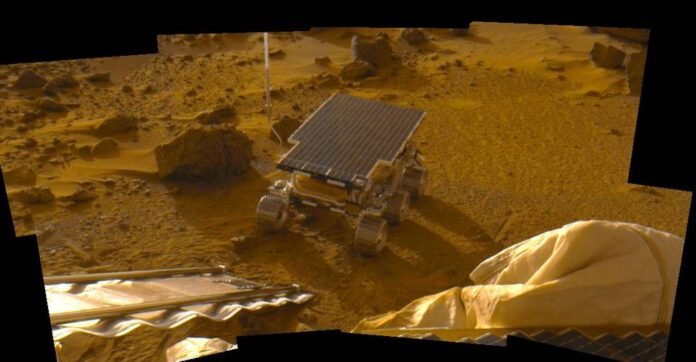
WASHINGTON: NASA’s program team evaluated and refined the architecture to bring back scientifically selected samples, which are currently in Jezero Crater on the Red Planet (MARS) by NASA’s Perseverance Rover (MARS). Perseverance rover) are in process of collection.
The US space agency NASA has set a deadline for bringing samples of Mars. NASA has said that by 2033 it will bring samples of Mars to Earth. NASA has completed a review of the system requirements for its Mars Sample Return Program, which is nearing the completion of the Conceptual Design Phase.
Contributions of the European Space Agency included
During this phase, the program team evaluated and refined the architecture to bring back scientifically selected samples, which are currently in the collection process by NASA’s Perseverance rover at Jezero Crater on the Red Planet. are in. This mission includes contributions from the European Space Agency, which is expected to reduce the complexity of the mission and increase the chances of success in the future.
“The conceptual design phase is when every aspect of a mission plan is put to intense scrutiny,” said Thomas Zurbuchen, associate administrator for science at NASA Headquarters in Washington. “Some important and beneficial changes are taking place in the plan, which can be directly attributed to the recent successes of the Perseverance rover at Jezero and the amazing performance of our Mars helicopter,” he said.
No more lander will be involved to bring samples
This advanced mission architecture takes into account the recently updated analysis of the expected longevity of Perseverance. The Perseverance rover will be the primary instrument for bringing NASA’s sample retrieving lander (a spacecraft designed to land on the surface of a planet) and the European Space Agency’s (ESA) sample transfer additional resources to Earth. That is, the Mars sample return campaign will no longer include the sample rover or its associated lander.
Two sample recovery helicopters will be involved to bring samples
The lander, which will receive samples from Mars, will include two sample recovery helicopters, which are based on the technology of the Ingenuity helicopter.

Ingenuity is a small robotic coaxial rotor helicopter operating on Mars as part of NASA. This helicopter has made 29 flights to Mars so far and has been operating for more than a year beyond its scheduled life. These helicopters will provide a secondary capability to retrieve samples accumulated on the surface of Mars.





















































